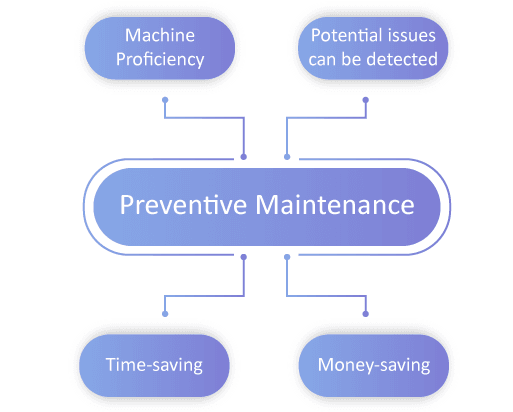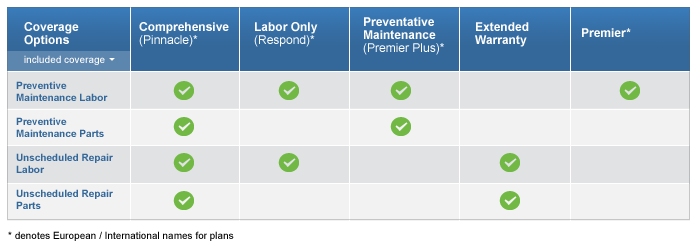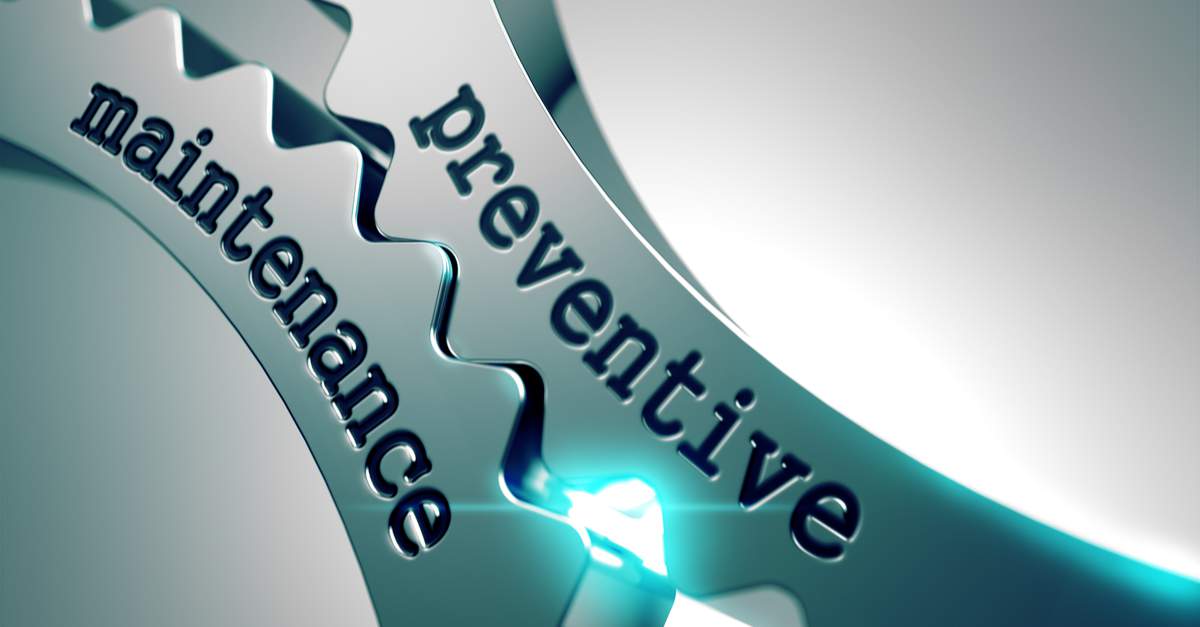In an ideal organization, every machine works perfectly, all the time, and there is uninterrupted production, 24x7x365. Also, there is little need for repairing, as machines run efficiently and there is no equipment downtime.
But that rarely happens, as machines can fail when you are least prepared, or at least so when you do not have a preventive maintenance plan for machines ready.
Read on to discover why preventive maintenance creates the right buzz in future-ready organizations and what distinct features you can expect from preventive maintenance software, such as Limble CMMS.
What is Preventive Maintenance?
Preventive maintenance is a process that consists of periodic inspections and repairs intended to prevent equipment failure and reduce the probability of asset breakdown.
Unlike corrective maintenance, which identifies a breakdown as it happens or might happen soon, preventive maintenance identifies problems before they occur and fixes them. Hence, preventive maintenance can increase equipment uptime and enable better budgeting.
As a type of planned maintenance, preventive maintenance carries out necessary inspections, like identifying the signs of imminent breakdown and mend it while a machine is still running.
Preventive maintenance can sometimes be simple, like cleaning HVAC filters or oiling pump bearings. However, they are mostly complex and may include calibration, gas leak repairing, or any other complicated inspection and repairing process.
In essence, preventive maintenance enhances machines and equipment’s operational efficiency and often increases an organization’s productivity.
What are the Different Types of Preventive Maintenance Plans?
Generally, organizations choose one of the two broad types of preventive maintenance plans – time-based and usage-based.
In time-based preventive maintenance, periodic inspections are carried out at pre-defined intervals, irrespective of how the asset is being utilized. Hence, if you go for time-based maintenance of HVAC systems in a manufacturing facility, the maintenance technician would inspect the machines at the said period, irrespective of how it was used.
In usage-based preventive maintenance, the maintenance depends on asset use. Hence, you can set a figure, on achieving which the technician would inspect the machine and oil, repair, or replace whatever is required.
Why is Preventive Maintenance Important in an Industry?
Besides improving the operational efficiency of machines and equipment, preventive maintenance also helps in the following significant ways.
Reduces Downtime
Perhaps the most significant advantage of preventive maintenance is that it enhances the productivity of a customer-centric organization.
Customers are always at the core, and you need to deliver top-class products at the right time. Any error or malfunction in a machine can negatively affect the product lifecycle and may lead to disgruntled customers.
By employing a proper preventive maintenance plan, you can ensure that your production facility does not have to deal with unscheduled downtime. As a result, the equipment uptime improves, and you can meet customer deadlines without any worry. Moreover, it helps your organization progress fast towards an OEE (Overall Equipment Effectiveness) score of 100%.
Hence, preventive maintenance improves your credibility in the industry and increases the satisfaction level of consumers.
Makes Your Assets More Reliable
In the industry, reliability is everything. If your assets function reliably, you can accept more projects and create high-quality products that beat the benchmark.
Preventive maintenance increases machine and equipment lifetime and enables you to measure the expected output and production capacity accurately. It also aids in revenue projection so that you can allot your budget accordingly.
For example, let’s assume your company manufactures mirrors for cars, and your manufacturing unit can produce 1000 mirrors every day. If you do not have a preventive maintenance plan and a critical machine collapses, you cannot deliver 1000 mirrors on a fateful day.
And the backlog that gets created will take weeks to clear, even when you ignore the loss to the company’s reputation. Hence, you can assure reliable and uninterrupted production and delivery to your clients by having a time-tested preventive maintenance plan.
Improves Your Business’s Bottom Line
If you still haven’t moved to preventive maintenance, the chances are high that your organization relies on a corrective or reactive maintenance model. As a fact, the cost of reactive maintenance can be substantially higher than preventive maintenance. Additionally, there is no guarantee that you will get the spare parts when you need them the most.
Imagine you are working on an HVAC system, and it suddenly stops working. You call in the technician, and they inform you that the part needs to be procured from a vendor who is hundreds of miles away from your plant.
You can either wait it out in such a scenario or replace the part with a cheaper and indigenous alternative. In both cases, you lose precious person-hour and spend more to buy the part and make up for the lost time.
Preventive maintenance helps you procure critical parts well in advance, hence eliminating the need for last-minute scurrying and ‘just in time’ shoddy repairs. As you identify and predict equipment depreciation early, you can order the critical components at a discount.
Hence, preventive maintenance can improve your business’s bottom line by making procurements streamlined and time-bound.
Increases the Safety Quotient
Initially regarded as a risk assessment tool, the safety quotient makes your employees feel safe and secure in the organization. Taking cue from this, you can use the preventive maintenance program to make your organization secure.
Preventive maintenance entails the identification of shabby or overused parts and repairs or replaces them as needed. Hence, it reduces the stress on your machines and keeps equipment and machines in optimal condition.
Thus, preventive maintenance not only makes your employees feel safe but also augments customer safety.
How Can You Create the Best Preventive Maintenance Plan?
The following five steps can give you the right thrust into the world of preventive maintenance.
1. Diagnose the Problem
The first thing you may do is to ask yourself about the objective of preventive maintenance. Find out the most common factors for equipment downtime, as it will help you design the preventive maintenance plan accordingly.
2. Prepare the List of Assets
In the next step, you need to arrange the critical assets in your organization systematically. Try to segregate them into asset classes and quality standards.
3. Set the Priorities Straight
There may be countless machines and equipment in your organization. However, not all are equally vital. Conduct a risk assessment and identify the ones directly related to improving operational efficiency and keep those on top of the preventive maintenance checklist.
4. Lay Out Concrete KPIs
KPIs are crucial for keeping a tab on your preventive maintenance plan. Setting concrete KPIs will make the Maintenance Manager’s task easier, as they can track the interventions and take timely measures to ensure the plan sticks to its course.
5. Evaluate the Plan
As a final step, you need to evaluate the plan and modify it to suit the industry’s changing dynamics.
Conclusion
A well-laid-out preventive maintenance plan can increase productivity. If you want to see how a top-class preventive maintenance plan looks like in real, look at asphalt preventive maintenance.



Leave a Reply